Useful tips and how to travel to Ukraine (2025)
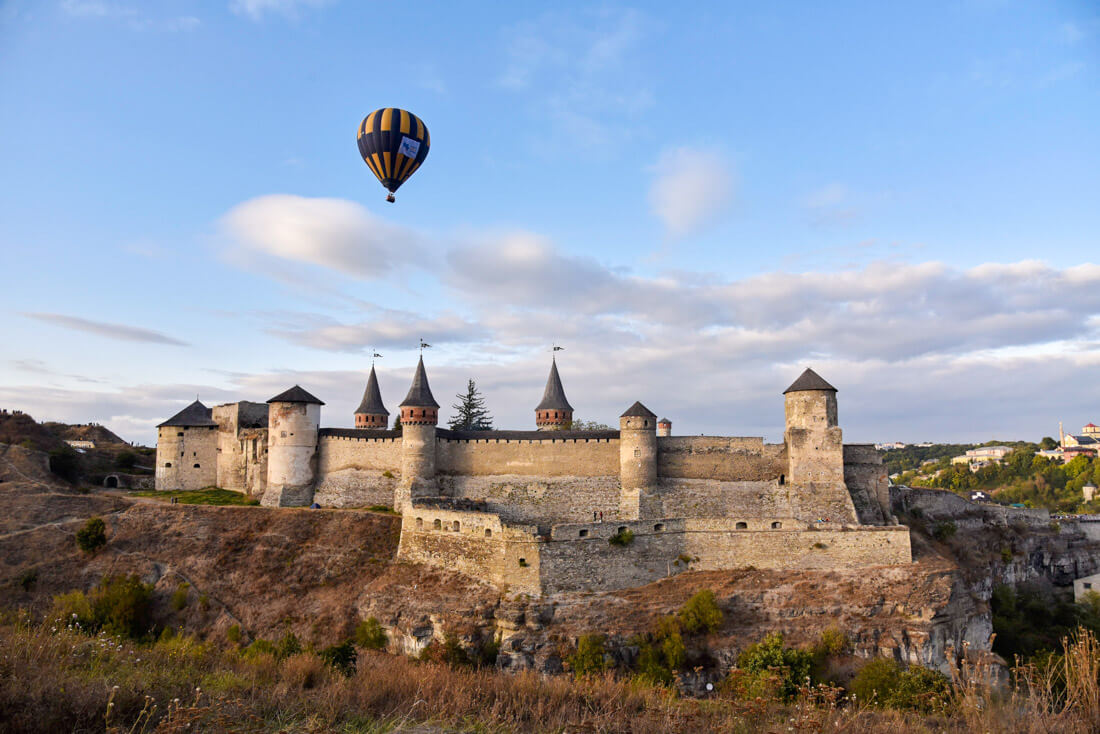
Bordering Russia to the east and the EU to the west, Ukraine is a massive piece of land barely discovered by the average traveler.
Intrepid adventurers will travel to Ukraine for visiting Kiev, and then pay a short visit to other big cities such as Lviv or Odesa, but the rest of the country remains pretty unknown to most of us.
However, Ukraine has a lot to offer and after spending 45 days roaming around the country, discovering everything from intriguing medieval castles to a nuclear missile launch facility, this is the best travel guide available on the internet, containing everything you need to know for traveling to Ukraine, from transportation tips to top experiences, cultural facts, visas, safety and much more!
Interested in Belarus as well? Read my useful tips and how to travel to Belarus
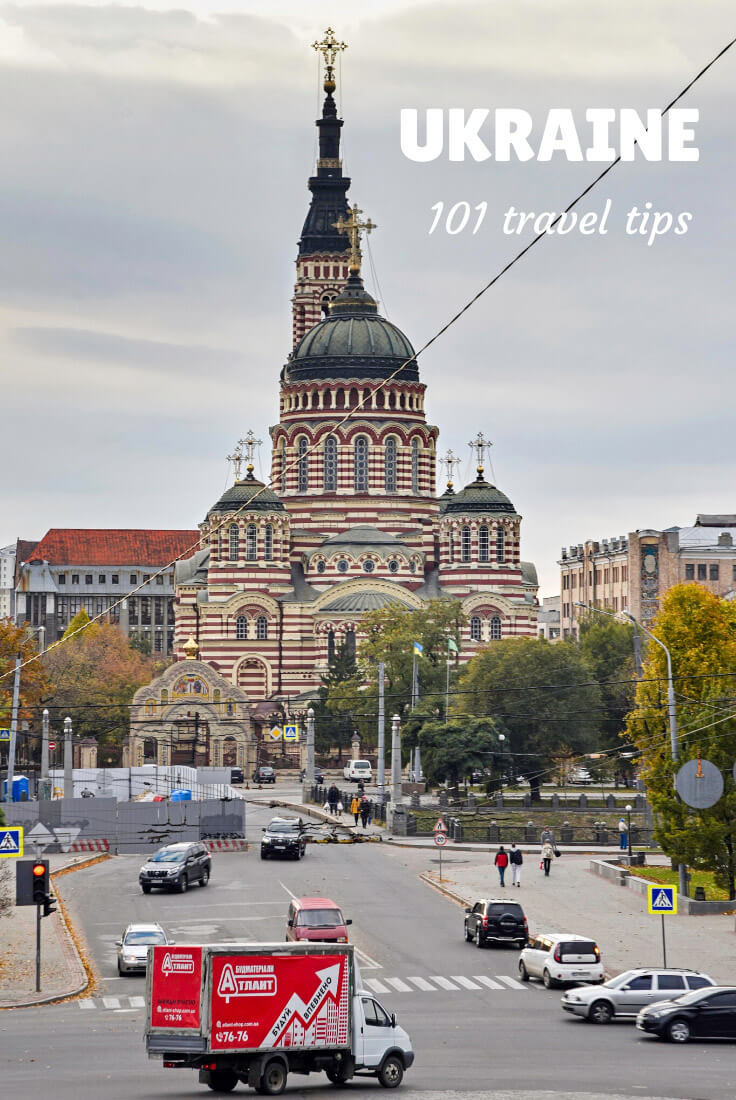
In this Ukraine travel guide you will find:
our recommended travel insurance for Ukraine
IATI Insurance is the most versatile insurance for any destination, including Ukraine.
Introduction: why travel to Ukraine?
Traveling in Ukraine is a unique experience, like nowhere else.
Do you know why?
Because here, you could spend weeks admiring dreamy, Medieval castles and fortresses and perfectly-shaped, cute old towns and, at the same time, you could discover the most offbeat places in Europe, ranging from a nuclear missile launch facility to the ghost city of Prypiat, and a vast range of Soviet and Communist heritage.
There isn’t another single country in Europe where you can do so much of the above in one single trip.
And the best of it is that, except for a few places, most of the country remains raw, authentic and very, very Ukrainian.
Traveling in Ukraine can be a real offbeat European adventure, like nowhere else on the continent.

🪪 How to get a visa for traveling to Ukraine
Remember that Ukraine is in neither EU nor the Schengen area, so different visa rules apply.
Typically, most nationalities can get a 90-day free visa on arrival.
However, WATCH OUT! Because there are a couple of countries, including Australia, New Zealand, and Mexico whose citizens, unexpectedly, will need to pre-arrange an e-visa.
I traveled to Ukraine with my Mexican girlfriend and, since Mexicans can get a free visa on arrival in absolutely every country in Europe, we just assumed that she wouldn’t need one for visiting Ukraine but apparently, she did and, on our arrival, she was deported.
We traveled to Moldova to apply and wait for her visa which, by the way, took almost two weeks, plus she had to submit a lot of documents, from travel insurance to the flight or train ticket out of the country.
Anyways, here you have more information about this painful process.
⛅ Best time to visit Ukraine
Visiting Ukraine in winter
Winters in Ukraine are deadly – as you already know – but if you are just planning to visit Kiev, Lviv or any other big city, as long as you wear proper clothes, you should be fine. In any case, traveling in Ukraine, in winter, onboard a Soviet train can be a unique experience.
Visiting Ukraine in summer
I traveled in Ukraine during the last two weeks of August and, whereas Lviv was mostly all right, the countryside was utterly hot, with temperatures around 30-35ºC.
Visiting Ukraine in spring and autumn
The best seasons to visit Ukraine. Not so hot, not so cold. I spent the whole month of October in the country and colors were at their very best, absolutely beautiful.
Traveling in Ukraine by marshrutka in summer
Most marshrutkas don’t have AC and, for some incomprehensible reason, old women – and they have full authority to do it – will always close the windows because they feel cold, even when it’s 40ºC inside the minivan, and funnily enough, nobody will complain. If you are backpacking in Ukraine in summer, be aware of that.
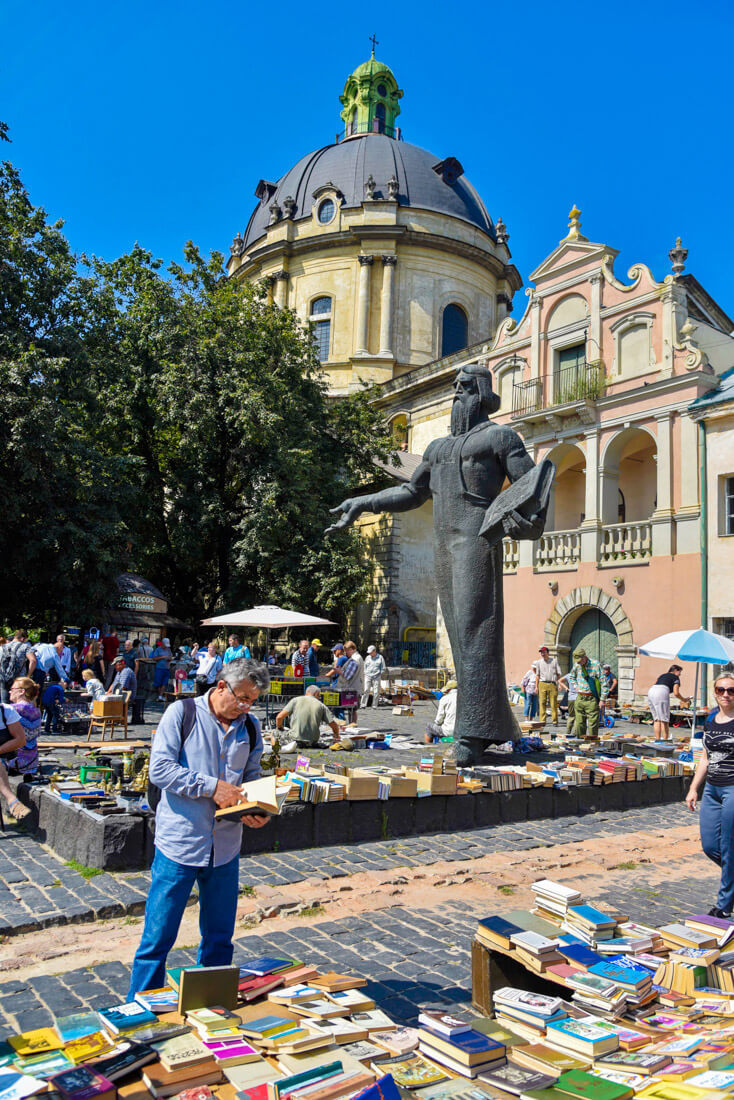
📚 Best books for independent travel in Ukraine
Ukraine travel guide by Bradt
The best guide book is, by far, the one written by Bradt, as they provide so many details about each and every region in the country, including many mentions of real offbeat gems and deep and useful travel tips for Ukraine.
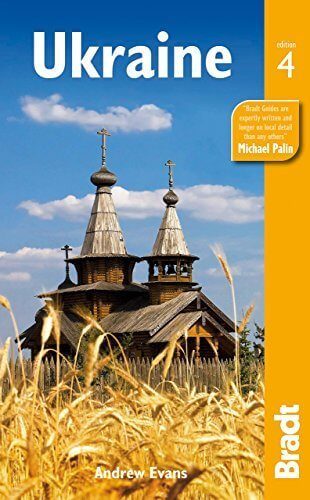
Ukraine travel guide by Lonely Planet
A good purchase as well, but I prefer Bradt, as the Lonely Planet doesn’t get that deep into the different destinations.

Voices from Chernobyl by Svetlana Alexievich
If you are visiting Ukraine, it means that you may visit Chernobyl as well and, for that, I recommend you get this book, written by a Nobel prize winning author, a compilation of testimonies directly related to the disaster. A useful book for anyone wanting to empathize with all victims.
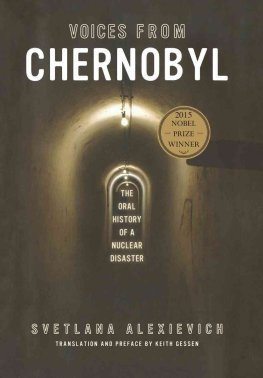
Why visit Ukraine: Top 5 experiences
Just a small glimpse of some of the things you can do when you travel to Ukraine:
1 – Explore one of the greatest cities in Europe
Kiev is an amazing city with loads to see, loads to do and so much going on.
I spent two weeks in the capital and they were the best days of my trip.
From epic churches to bizarre Soviet places and great nightlife, Kiev is a city which you will want to return to.
Read my guide: How to spend 4 days in Kiev

2 – Wander around remote mountain villages in the Carpathians
If you want to visit and check out authentic rural life in Ukraine, head to the Carpathians and spend a few days hiking from village to village.
The mountains are pretty and the region has never had much exposure to the outside world, not even during the USSR, as these remote lands were difficult to control.
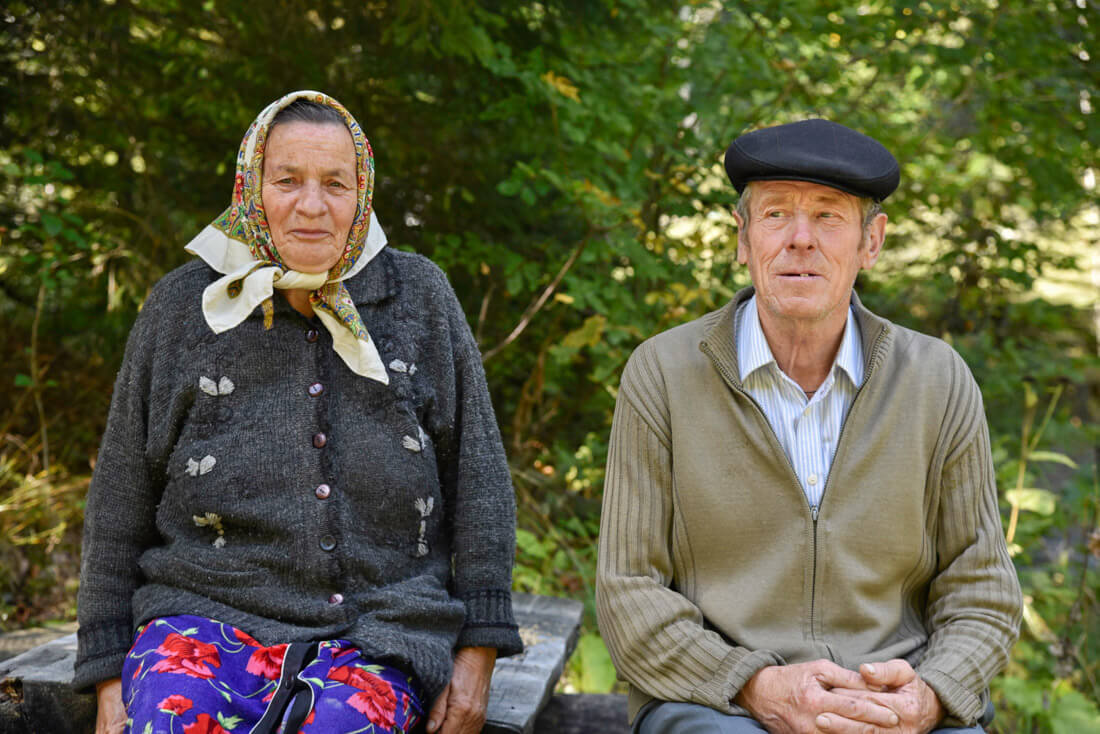
3 – Check out the dreamy castles & cute old towns in Western Ukraine
Most of Western Ukraine used to belong to the Austro-Hungarian Empire and then to Poland, so it is easy to understand why they have so many castles, and the different towns and villages have Central European-like architecture.
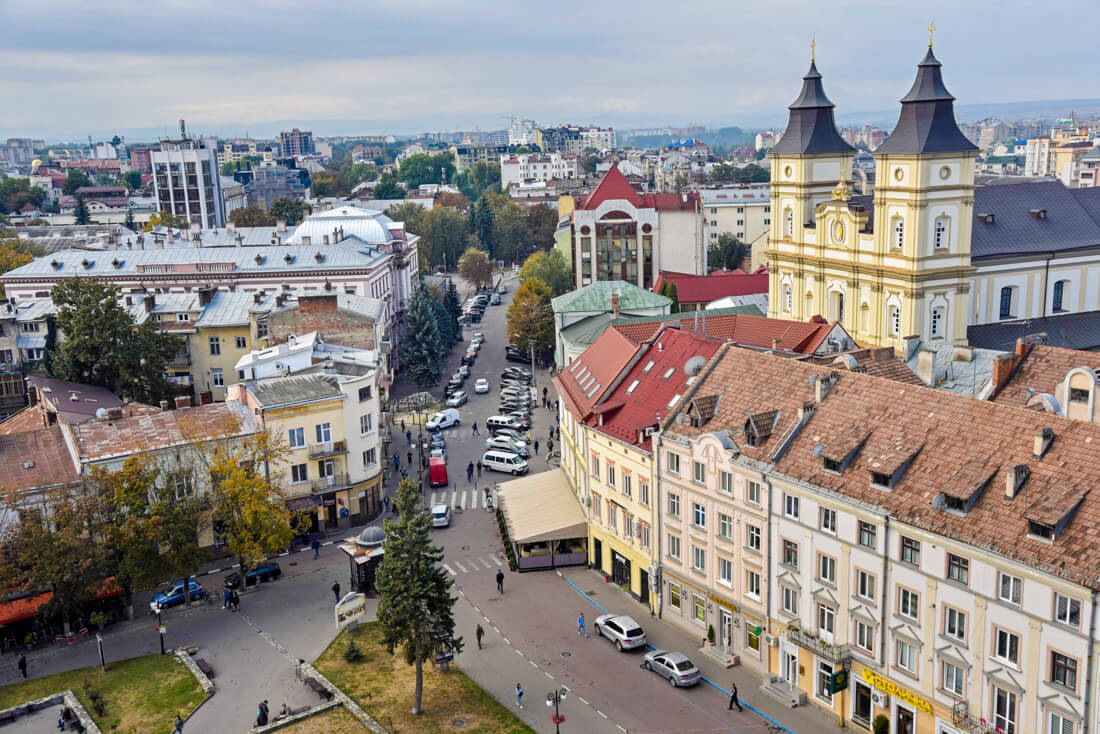
4 – Pay your respects to the victims in Chernobyl Exclusion Zone
You already know about Chernobyl, so I won’t go into details, but the exclusion zone is 150km north of Kiev and, even though it is becoming too popular and kind of touristy, it is good to go and see with your own eyes the consequences of one of the worst human disaster in our history.
Read my guide: How to visit Chernobyl responsibly
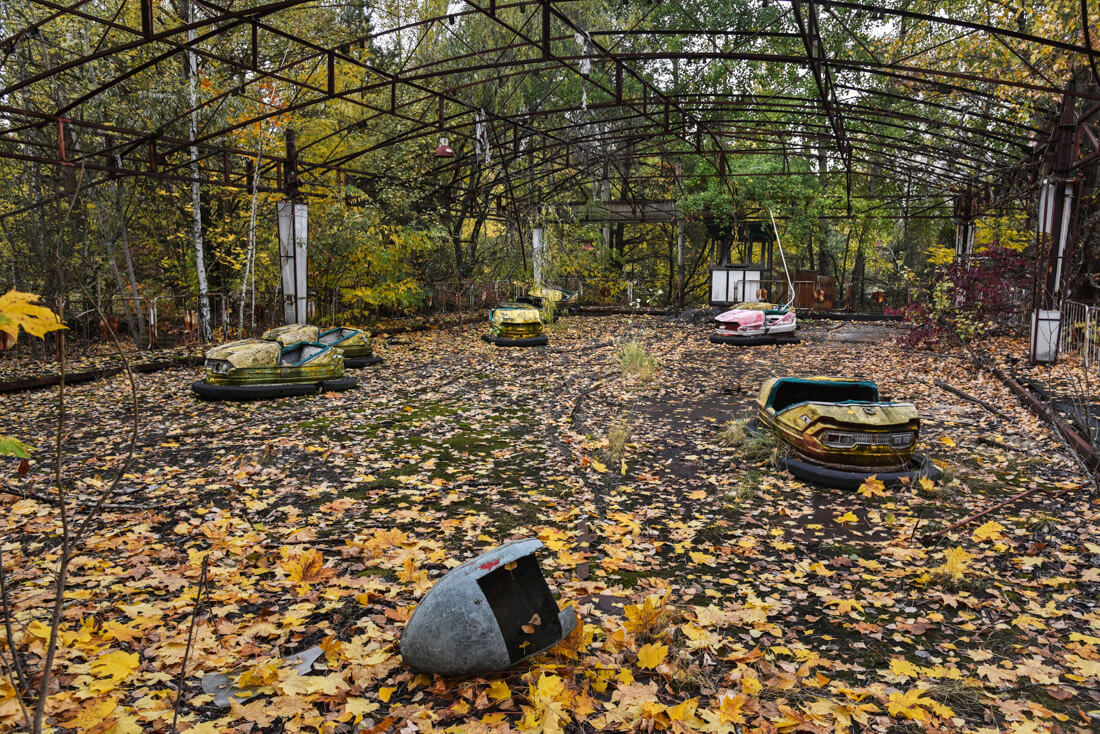
5 – Visit a nuclear missile launch facility
An old Soviet nuclear missile launch facility has been turned into an awesome museum where, besides checking out all the military nuclear arsenal, you can go into one of the silos and the underground control room.
Read: Offbeat places to visit in Belarus

🛫 How to travel to Ukraine
By air – Both Lviv and Kiev have daily flights to pretty much any country in Europe and it’s not difficult to find a budget flight.
By land – Ukraine shares a border with:
- European Union: Hungary, Romania, Poland and Slovakia. Crossing these borders should be very easy, with no secret procedures.
- Belarus: You can cross the border but be aware that the visa on arrival (for Belarus) is only available if you fly in & out from Minsk so, if you want to enter/exit Ukraine via Belarus, you need to apply for a Belarussian visa at the embassy.
- Moldova: Countless borders to choose from but most people seem to prefer taking the train from Odesa to Chisinau. I personally entered Ukraine from the northern Moldovan border, near Chernivtsi, on my way to the Carpathians. Read my Moldova travel guide.
- Russia: Despite the ongoing conflict, the border is open. Check this report to find out how to do it. Also read: Russia travel guide
By sea – There is the possibility of traveling to Ukraine by ferry from Batumi (Georgia) to Odesa. There are two companies offering this service, Ukrferry, and Ferrysped, and detailed schedules may be found on their websites. A ticket costs around 100USD. Read my travel guide to Georgia.
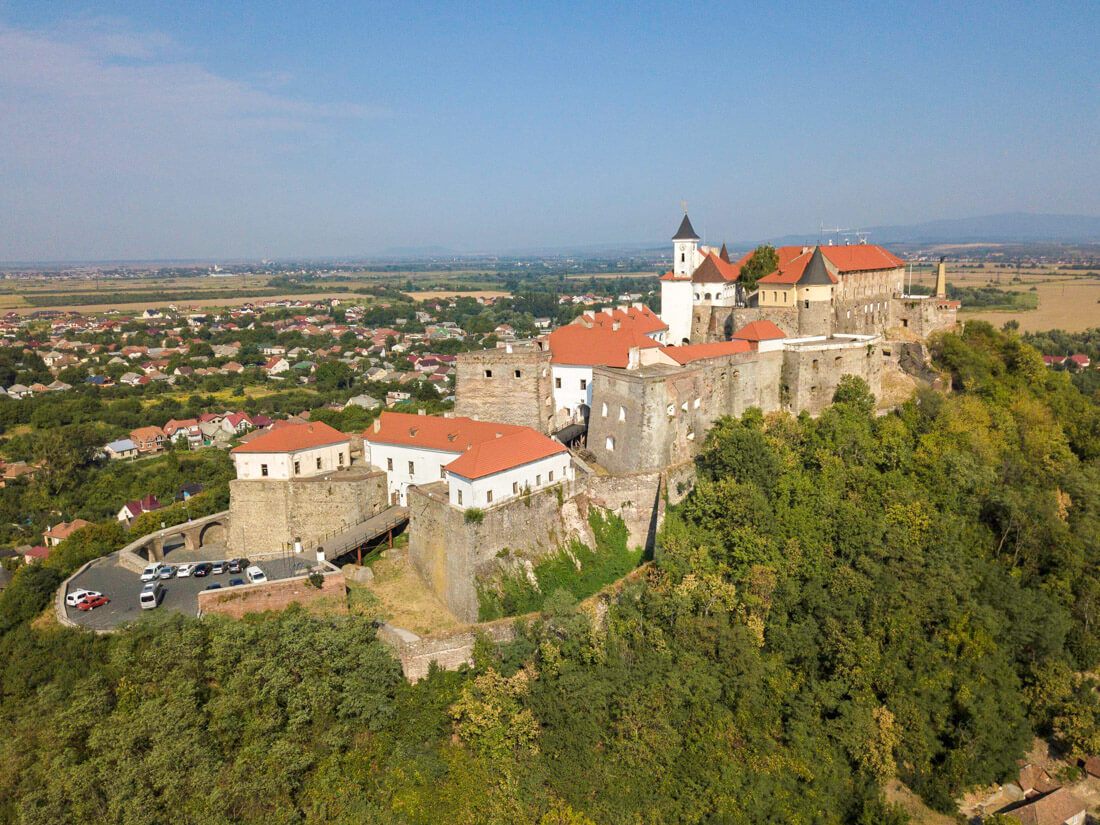
🚑 Travel insurance for Ukraine
IATI Insurance is the most versatile insurance for any type of trip and destination, including Ukraine:
- Different plans for each kind of travelers
- Budget plans
- Covers senior citizens too
- Readers of this blog can get a 5% exclusive discount.
Ukraine and Russia: What the hell is going on
CRITICAL INFORMATION FOR YOU TO KNOW WHEN YOU TRAVEL IN UKRAINE
Ukraine is not Russia!
Ukraine is not Russia the same way that Canada is not the USA or New Zealand is not Australia.
Sure, they share a good piece of history and some cultural aspects, but you don’t need to spend much time in the country to realize that they are indeed very different, especially when you travel in Western Ukraine, which wasn’t part of the USSR until the end of WWII.
Ukrainians are particularly sensitive on this topic, to the extent that they even get offended when you write Kiev instead of Kyiv, as Kiev is the direct Russian transliteration, even though both terms are accepted in English.

The Ukraine-Russia war
Today, as you may know, there is an ongoing conflict between Ukraine and Russia.
It is an actual war.
In 2014, Russia annexed Crimea to themselves and yes, Crimea isn’t part of Ukraine anymore.
Their map has changed and whatever Ukrainian map in which you see Crimea, is already outdated – unfortunately.
Nowadays, the ongoing conflict is happening in another region named Donbas, a historical region in eastern Ukraine, today covering Donetsk and Lugansk provinces (oblasts).
Most people living in these provinces are ethnically Russian and, after Crimea was annexed to Russia, these pro-Russian people declared their independence from Ukraine and the problem arose when Russia decided to support the rebels.
I don’t know what the end of this will be of this but Ukraine’s map might be altered again in the next few years.
These are reasons why, in the rest of Ukraine, especially in the West, the people absolutely despise the Russian Government and don’t like it when foreigners identify Ukrainian culture as a mere variant or extension of Russian, so be aware of that.
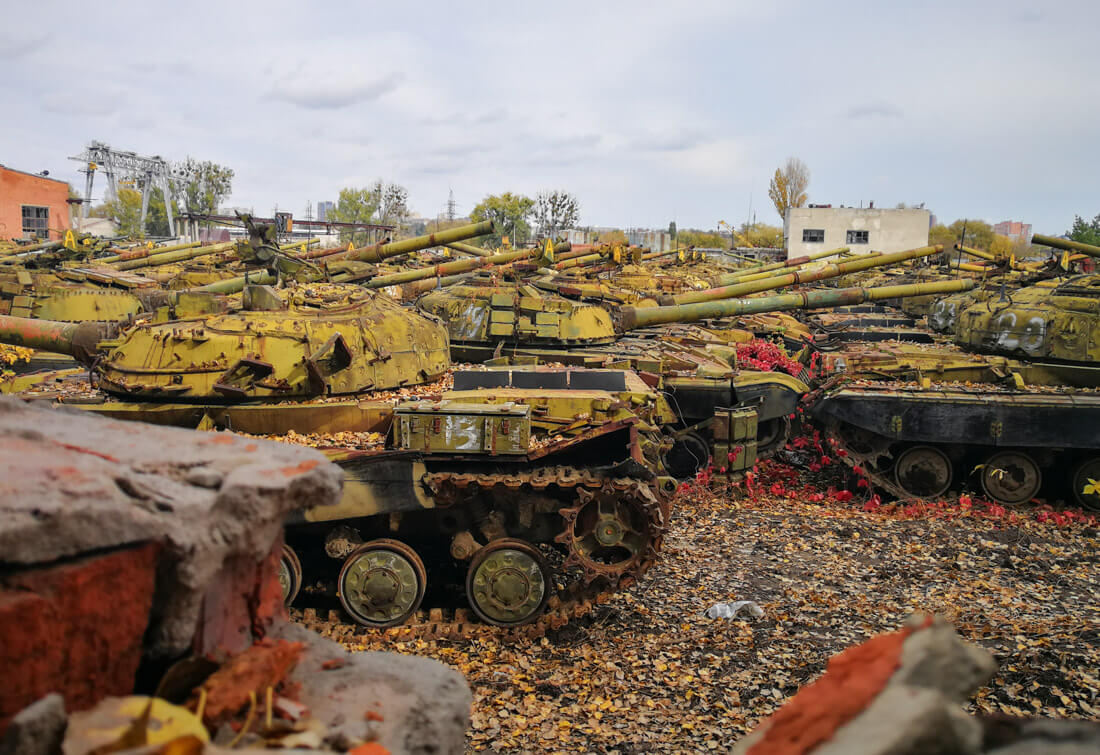
Culture, people, language, and religion
Modern Ukraine as it is known today, with its current borders had never existed before the country got its independence in 1991.
Over the centuries, different parts of the country have been ruled by different civilizations, from the Kievan Rus – a federation found by Slavic people which Ukraine, Russia, and Belarus claim their cultural ancestors come from – to the Kingdom of Galicia-Volhynia – which used to be part of the Austro-Hungarian Empire and then Poland and it was only annexed to the USSR after WWII.
Ukrainians claim that their modern culture directly derives from both the Kievan Rus and the Kingdom of Galicia, so their traditional culture is a mix of east and west – well, not that western but Central European – and their traditional clothes are named vyshyvanka, which are also worn in Belarus and are quite similar to Polish and Moldovan ones.
During the independence day, sometime at the end of August, I noticed that many Ukrainians were wearing the vyshyvanka.

The people: Ukrainians
Some travelers say that Ukrainians are serious, or that they can sometimes be unfriendly, but this is just a classic Soviet attitude, seen in other former Soviet countries as well.
Yes, some of them do look serious but, once you get to know them, Ukrainians are great people and are very hospitable as well, especially in the rural areas.
In the Carpathians, for example, we were randomly hosted by some locals who followed us on Instagram and their level of hospitality was comparable to that you experience when traveling in Iran 😉

Language
Ukrainian is the official language and, in order to understand how it differs from Russian, take Spanish and Portuguese as examples.
Many Portuguese understand Spanish and vice-versa because both languages are very close but very different at the same time, same as with Ukrainian and Russian.
The Russian language, however, is widely spoken across the country and, in Donbas and the Crimea it is also recognized as an official language along with Ukrainian.
In Western Ukraine, Ukrainian is the language that prevails.
By the way, Ukrainians use the Cyrillic alphabet and if you can’t read it yet, I strongly recommend you do learn it, because it will be a real game-changer for traveling in Ukraine.
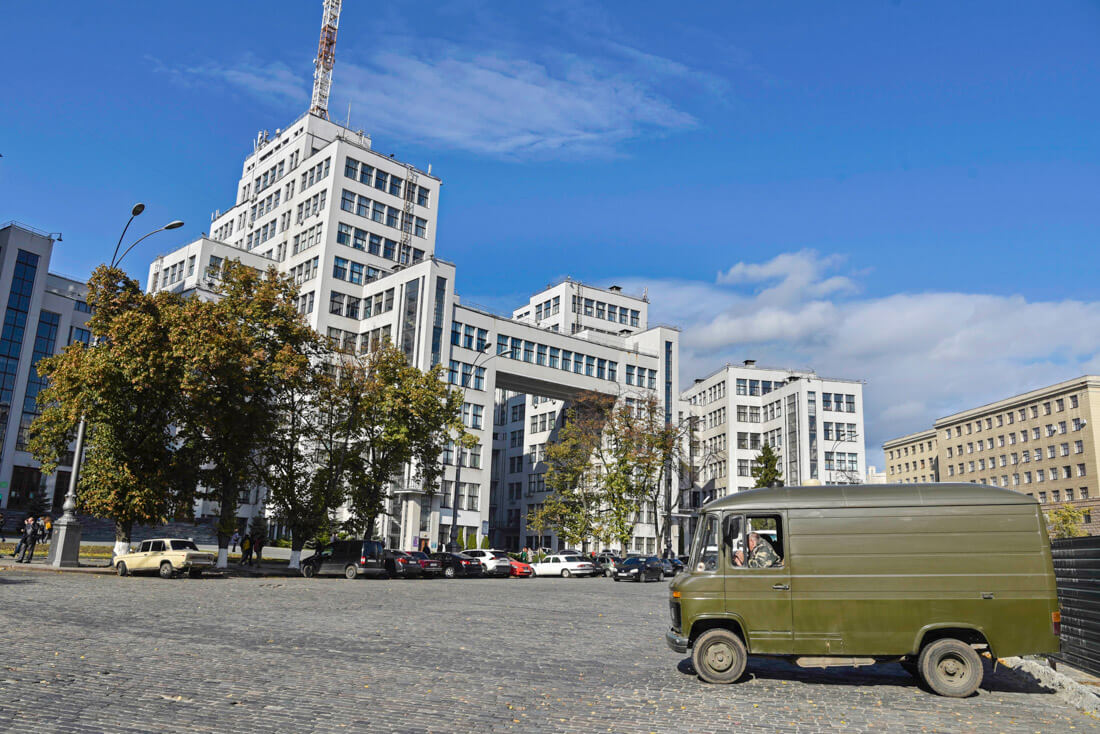
Religion
Most Ukrainians belong to the Ukrainian Orthodox Church and they affirm that this is the original Church of ancient Kievan Rus.
Something that surprised me about Ukraine was that religion plays a very important role in their society, more than any other European country I have been to.

In smaller towns and cities, churches are packed with young people during Sunday services and in big cities such as Kiev or Lviv, while the young generation doesn’t really practice their religion, they do believe in God, generally speaking.
Visiting the endless churches and amazing Orthodox complexes will always be one of the highlights of any Ukraine travel guide and I highly recommend you go to Pochaiv, the second holiest monastery in the country, after Kiev Lavra, but the one in Pochaiv is nicer, for the simple reason that it is bigger and located in a rural, mystical area.

🍲 Food in Ukraine
Ukrainian cuisine isn’t the highlight of the country but it is all right, not bad at all.
Sometimes it is difficult to determine which dishes are Ukrainian and which ones are Russian, as you can find them in both countries but in any case, Ukrainian cuisine is hearty and made for feeding masses.
Some Ukrainian foods you are likely to taste during your trip
- Borsch – The national food which they are most proud of is borsch, a beetroot soup widely eaten across all the former USSR, but Ukrainians affirm and re-affirm it is originally from Ukraine, and I believe them, because borsch is nowhere else as available as on Ukrainian menus; well maybe in Belarus as well. Borsch is the way to go and it is traditionally served with sour cream and with something named salo.
- Salo – Slices of pork fat, very salty and very popular. Ukrainians find it a real delicacy but I don’t like it.
- Varenyky – When you don’t know what to order, you order varenyky, the classic dumplings available in many Slavic countries, but they always differ in shape, filling and have different names. Ukrainian varenyky are usually filled with brynza (local cheese) or potatoes.
- Syrniki – Typically eaten for breakfast or brunch, these are some small, thick, local pancakes filled with cottage cheese, but they can also contain apple and other ingredients.
- Chicken Kyiv – This was weird, and not my favorite, but it is very traditional. It consists of fried chicken filled with dairy butter and herbs. A real bomb.
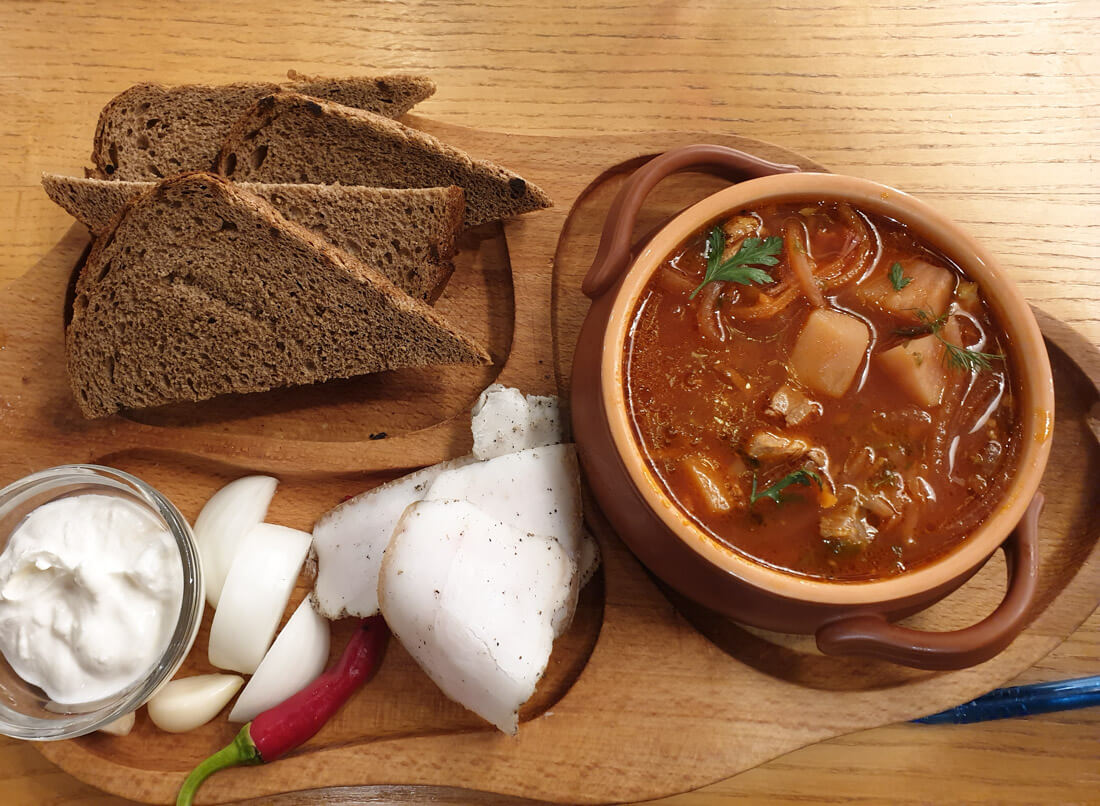
And there’s more.
Local restaurants in big cities will have many other choices but, in the rural areas, the options will be limited to borsch and varenyky.
I once had borsch + varenyky for 4 days in a row!
Then, in the Western part of the country, since that area used to be part of the Austro-Hungarian Empire and then Poland, traditional dishes are more Central European, so you find things like goulash, whereas in the Carpathians, you find Moldovan and Romanian dishes such as banusz.
This blog is purely about Ukrainian food and has some really good information.
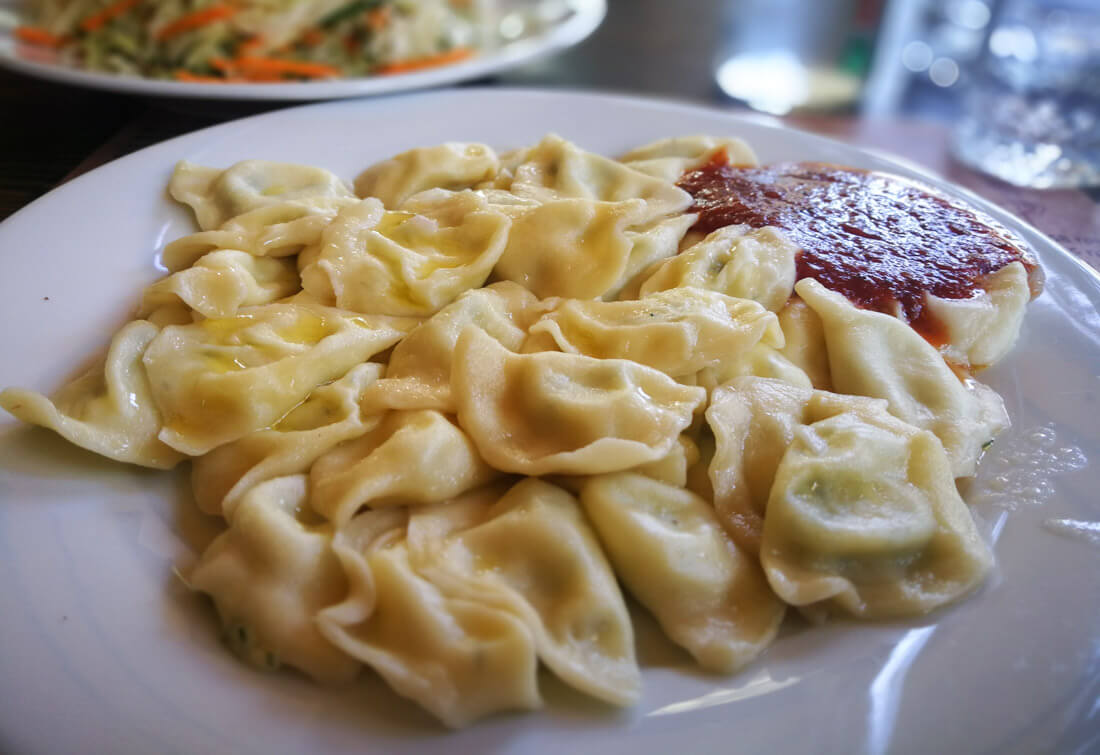
⚠️ Is it safe to travel to Ukraine?
Because of recent events, some people may perceive Ukraine as a dangerous destination to travel to but trust me, it is not.
Maidan protests (2014)
In 2014, Kiev witnessed a series of protests against the Government that lasted for more than 3 months, resulting in several peaceful demonstrators being murdered by the police.
It was crazy and such was the gravity of those protests and repression, that they were all over the international news for weeks.
During those 3 months, traveling to Kiev wasn’t recommended, of course, but this was a past episode that ended with the Prime Minister Yanukovych fleeing the country and the celebration of new elections
Donbas war
As we previously discussed, there is a conflict going on in Donetsk and Lugansk, in which according to the UN, more than 13,000 people have died as of 2019.
The war, however, solely affects those two provinces, doesn’t go beyond them and, even if you wanted to go there, you couldn’t because foreigners aren’t allowed anymore.
Other than that, besides all the regular crime-related stuff, such as pickpocketing, that happens in any city – or the problem with Ukraine brides, but that’s another story – traveling in Ukraine is safe, very safe, and any Ukrainian will tell you that.
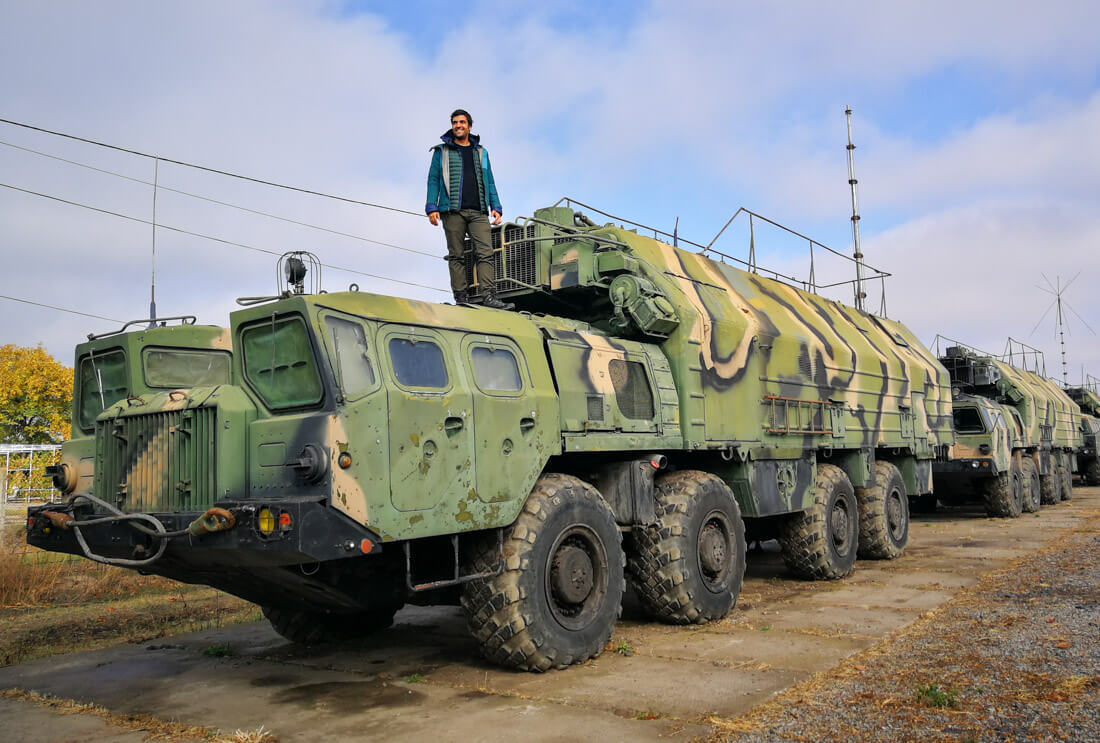
💻 Internet and connectivity in Ukraine
Ukraine has amazing 4G coverage and getting a SIM Card is very straightforward, as they didn’t even ask me for my passport.
I personally bought Lifecell, but Kyivstar seems to be the most popular one.
Prices are ridiculously cheap and I think I paid around 75UAH (3€) for a SIM Card packed with 4GB of data.
eSIM for browsing, calling and traveling in Ukraine
An eSIM is a regular SIM card with a digital format that works like a normal physical card, with the added benefit that you can buy it online before or during your trip, hence avoiding the hassle of buying it in a local store.
With Airalo, you can get an eSIM for a wide range of destinations, including Ukraine.
Get a VPN for traveling in Ukraine
You should always use a VPN when you travel, especially when you connect to public Wi-Fi networks.
Your connection will be much safer.
Moreover, you will be able to access content which is typically censored in Ukraine.
I recommend ExpressVPN – Extremely easy to use, fast and cheap.
If you want to learn more about VPN, check: Why you need a VPN for traveling.
💰 Money in Ukraine
In Ukraine, they use the Ukrainian Hryvnia (UAH) and, approximately:
1 USD = 40 UAH
Credit cards are generally accepted anywhere and most banks will accept international cards, even though they tend to charge a small fee.
How much does it cost to travel in Ukraine?
As per costs, Ukraine is a cheap country to travel around, especially because their currency has devalued massively since the Crimea crisis, when 1€ used to be equal to 10UAH.

Backpacking budget for Ukraine:
Assuming you stay in dorms and eat in budget cafeterias, you can easily travel in Ukraine for 25€ a day.
Typical costs (approx.)
- Dorm in a budget hostel: 200 UAH
- Budget apartment in Kiev or Lviv: from 600 UAH
- Local meal in a cafeteria: 100UAH
- Local beer: 40UAH
- Night train from Lviv to Odesa economical class: 200 UAH
🛺 Transportation tips: How to travel around Ukraine
The country is big but the public transportation system is great, which makes traveling in Ukraine fairly easy.
By train
Soviet trains at their best. Amazing way to see the vastness of the country.
If you have traveled in other Soviet countries such as Kazakhstan, Uzbekistan or Russia itself, their train system doesn’t vary much. In fact, it is the same.
You can get to pretty much any city but do book your tickets in advance, especially during high season, as the cheap ones run out quickly.
There are different types of carriages but the Soviet system has 3 classes:
- berth: no compartments but bunk beds are placed all over the carriage.
- compartment: 4-bed compartment.
- deluxe: 2-bed fancy compartment.
If you have never ridden a Soviet train, I recommend you travel in berth.
In case you are wondering, economical class in Ukraine (berth) isn’t like in India or Sri Lanka, not even close. They provide you with clean bed linen and the beds are relatively comfortable.
You can check prices, timings and book your ticket on this link (official governmental site).
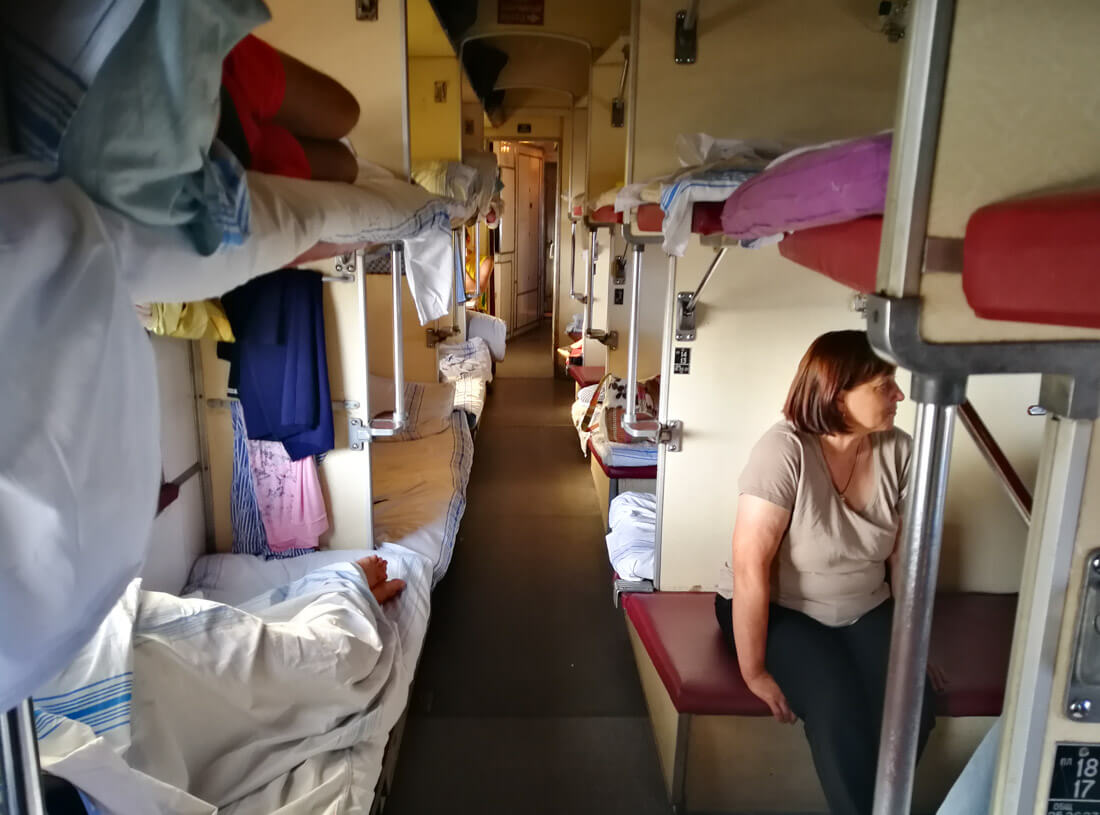
By marshrutka
Marshrutka means minivan in Russian and you may use them when going to smaller towns.
If you count by kilometer, it is much more expensive than traveling by train and around 5 times more uncomfortable, but if you are getting deep into Ukraine, this might be your only choice more often than you think.
By bus
Apparently, buses also run between major cities but I don’t see a good reason for taking them, apart from when train tickets to your destination are sold out but in any case, for long distances, it is also recommended to book your ticket in advance.
Anyways, you can book your tickets on this website.

❗ More information for traveling to Ukraine
📢 In my Travel Resources Page you can find the list of all the sites and services I use to book hotels, tours, travel insurance and more.
All guides and articles for traveling in Ukraine destination
Travel guides to former Soviet countries
- Russia Travel Guide
- Georgia Travel Guide
- Belarus Travel Guide
- Travel Guide to Moldova
- Azerbaijan Travel Guide
- Travel Guide to Kyrgyzstan
- Travel Guide to Tajikistan
- Uzbekistan Travel Guide
- Kazakhstan Travel Guide
I hope you enjoyed my Ukraine travel blog. Please, leave a comment for any questions you might have.
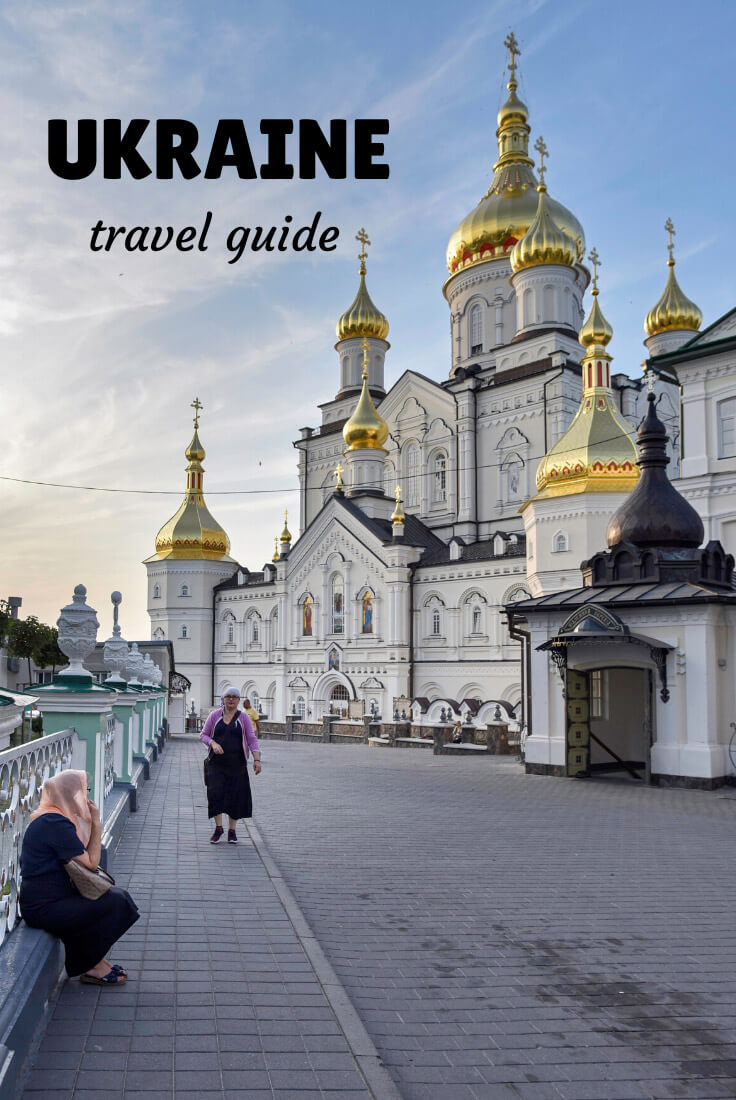
10 comments
Awesome guide on traveling Ukraine! As a Ukrainian, I can say that information you provided is useful and accurate. Keep on that track! 🙂
Thanks Irina, I am happy that you like this post as an Ukrainian 🙂
Una vez más, Joan, nos dejas con ganas de más.
It would be great if I could actually read the content on the site without the pop up! I
You mentioned in another guide that you see a lot of misery in Ukraine, but you didn’t mention it in this guide. I think it’d be interesting to include more information like that.
Hi
I want to travel to Odesa from Romania by car. How would I do that?
Thanks
Excuse me, but the Donbas conflict wasn’t started because “Most people living in these provinces are ethnically Russian and […] declared their independence from Ukraine and the problem arose when Russia decided to support the rebels.” Russia started the rebellion itself, pretending it to be started by those Ukrainians, just as Russia did it with all other neighboring countries, where they have disputed areas. I have a lot of friends in all parts of Ukraine, and I know what I’m talking about. And it wasn’t Prime-Minister Yanukovych who fleed, he was the President.
This blog post is very outdates and in many sections factually wrong, I don’t know why google is recommending this as if it was recently updated, when it obviously isn’t keeping up with the latest developments in Ukraine.
Im jone ukraine diffens
The correct spelling is KYIV